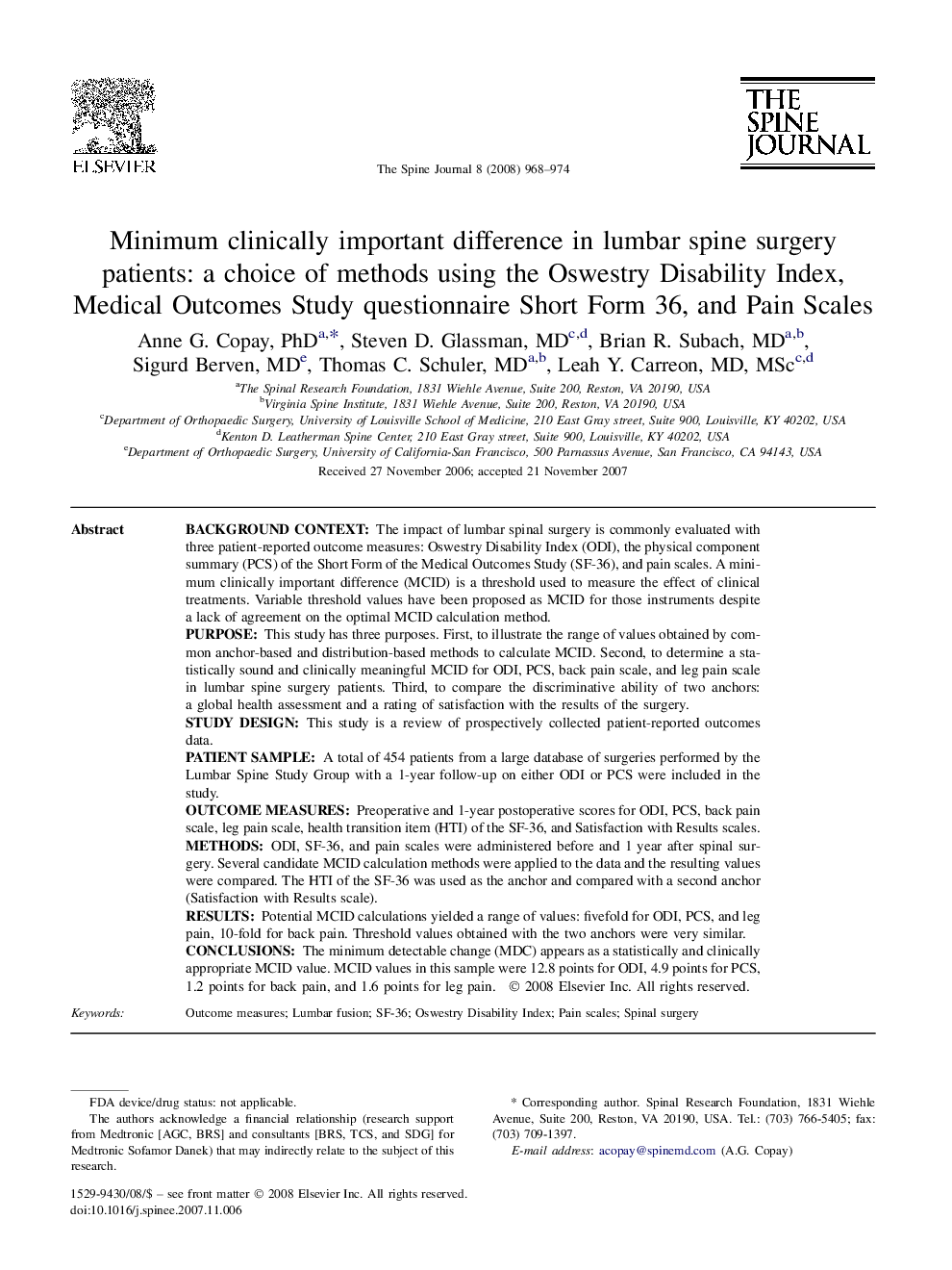| کد مقاله | کد نشریه | سال انتشار | مقاله انگلیسی | نسخه تمام متن |
|---|---|---|---|---|
| 4099823 | 1268658 | 2008 | 7 صفحه PDF | دانلود رایگان |

Background contextThe impact of lumbar spinal surgery is commonly evaluated with three patient-reported outcome measures: Oswestry Disability Index (ODI), the physical component summary (PCS) of the Short Form of the Medical Outcomes Study (SF-36), and pain scales. A minimum clinically important difference (MCID) is a threshold used to measure the effect of clinical treatments. Variable threshold values have been proposed as MCID for those instruments despite a lack of agreement on the optimal MCID calculation method.PurposeThis study has three purposes. First, to illustrate the range of values obtained by common anchor-based and distribution-based methods to calculate MCID. Second, to determine a statistically sound and clinically meaningful MCID for ODI, PCS, back pain scale, and leg pain scale in lumbar spine surgery patients. Third, to compare the discriminative ability of two anchors: a global health assessment and a rating of satisfaction with the results of the surgery.Study designThis study is a review of prospectively collected patient-reported outcomes data.Patient sampleA total of 454 patients from a large database of surgeries performed by the Lumbar Spine Study Group with a 1-year follow-up on either ODI or PCS were included in the study.Outcome measuresPreoperative and 1-year postoperative scores for ODI, PCS, back pain scale, leg pain scale, health transition item (HTI) of the SF-36, and Satisfaction with Results scales.MethodsODI, SF-36, and pain scales were administered before and 1 year after spinal surgery. Several candidate MCID calculation methods were applied to the data and the resulting values were compared. The HTI of the SF-36 was used as the anchor and compared with a second anchor (Satisfaction with Results scale).ResultsPotential MCID calculations yielded a range of values: fivefold for ODI, PCS, and leg pain, 10-fold for back pain. Threshold values obtained with the two anchors were very similar.ConclusionsThe minimum detectable change (MDC) appears as a statistically and clinically appropriate MCID value. MCID values in this sample were 12.8 points for ODI, 4.9 points for PCS, 1.2 points for back pain, and 1.6 points for leg pain.
Journal: The Spine Journal - Volume 8, Issue 6, November–December 2008, Pages 968–974